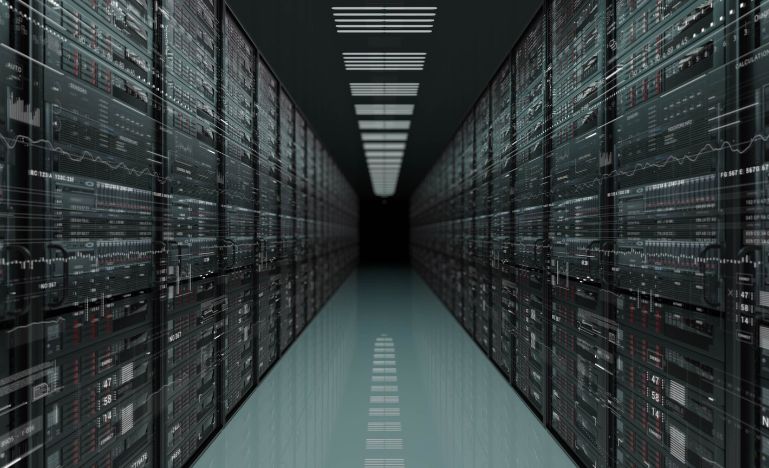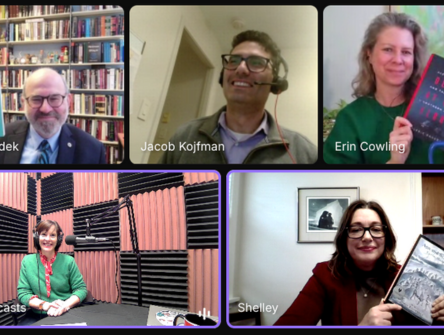Data’s dark, thirsty side
Data centres consume huge amounts of fresh water, but as Canada embraces AI as an economic driver, there may be a reluctance to enact legislation requiring them to report on and curb consumption

The world is finally waking up to artificial intelligence’s insatiable appetite — and not just for data. Besides electricity, the technology requires a mind-blowing amount of the planet’s most precious resource: H20.
Some jurisdictions are starting to come to grips with this tension — machines increasingly competing for stuff that people need to survive. Following a precedent-setting move by the EU in 2024, data centres, the backbone of AI, must now file reports detailing their energy and water consumption and outline the steps they’re taking to reduce both.
Others, such as the province of Noord-Holland in the Netherlands, halted new data centre developments due to potential drinking water shortages.
Experts say that because Canada is home to a fifth of the world’s fresh drinking water and is not facing shortages, it’s unlikely to follow suit on disclosure rules in the short term. Water is a provincial responsibility, making coordination difficult. Policymakers at both levels also see AI as a path to economic growth and will be reluctant to enact legislation that could chill innovation and investment.
"In the last two to three years, concurrent with the rise of AI, there's been a surge of data centre development,” says Jeremy Barretto, a partner at Cassels Brock & Blackwell, who doesn’t expect to see new disclosure rules emerging any time soon.
“When we hit scarcity, that's usually where there’s a desire for regulation.”
Richard Jones at Brownlee also doubts provincial governments will require reporting on water consumption. The environmental, social and governance (ESG) movement, which has spearheaded moves towards greater transparency, “is falling out of favour in the US, and I expect the same will happen in Canada,” he says.
Of the 11,000+ data centres globally, just under 250 are in Canada.
While essential for human life, water is also critical to keeping data centre servers from overheating as bits of code zip along wires and algorithms run thousands of calculations. On average, one AI-generated 100-word email uses about half a litre of water, depending on conditions, while images and video require much more.
Typically large warehouses that store and process data, data centres handle all sorts of internet traffic. However, AI chatbots require significantly increased computing power and, therefore, more resources than conventional internet data. According to Goldman Sachs, a single ChatGPT query requires about 10 times as much electricity as a Google search.
Data centres often use mains water—which humans use to drink and wash—to absorb heat and carry it off to cooling towers to evaporate. Potable water is preferable to surface water because it means equipment does not get clogged up with contaminants.
For the moment, data centres consume a modest amount of the world’s natural resources when compared with water-intensive industries like mining and agriculture. But it’s hardly a drop in the bucket, with an average mid-sized data centre going through about 300,000 gallons of water a day for cooling. Researchers at UC Riverside have estimated that global demand for AI could cause data centres to suck up as much as 6.4 trillion litres of fresh water by 2027.
Centres use around one to two per cent of the world's electricity — a figure that’s also expected to rise.
With the advent of AI agents and other high-tech tools and assistants, water usage is likely to increase significantly, just as areas of the globe experience water shortages. For instance, some experts even say artificial general intelligence (AGI) is closer than expected. The hypothetical AI system is highly autonomous, able to learn or understand any intellectual task a human can. That becoming a reality would lead to unknown impacts on the environment.
But no one knows what kinds of inputs the next generation of algorithms will require or what technical strides companies will make to reduce their resource footprint. Indeed, AI is expected to help fix the environmental problems it creates.
In any case, data centre numbers are expected to balloon everywhere, including Canada. Analysts estimate the US alone will see over $1 trillion invested in data centres over the next five years, with an additional $1 trillion invested internationally. Some say the recent expansion is the largest infrastructure build-out the world has ever seen.
However, this growth has not been matched with clarity on water consumption.
Analysts say there is generally a lack of solid information about the volume and quality of water used by data centres. Tech giants like Microsoft and Meta decline to reveal water usage in detail, citing proprietary reasons. Uptime Institute's 2024 survey found that only 43 per cent of operators they questioned collected water usage data, and even when they do, the information is not always easy to understand.
“Before there's a law on transparency, there's a need for a good standard way to express water use,” says Peter Judge, a senior research analyst at Uptime Institute Intelligence, an analyst service for the data centre industry.
While Canada is generally considered water-rich, some provinces, including Saskatchewan and Alberta, have experienced shortages, and new rules regarding access are already being implemented.
“Currently, there is a moratorium on any new licences for water from the Bow River Basin,” says Jones.
“To operate a data centre in southern Alberta, [a company] will have to either buy an existing water licence from another user, which may be a barrier to entry, or seek a water supply from a municipal utility.”
Even in the face of shortages, Alberta is gunning to become a leader in the water-hungry data centre space. The province recently launched its AI Data Centres Strategy, hoping to attract billions of new investments. eStruxture Data Centers, Canada’s biggest data centre firm, plans to site its largest facility near Calgary.
Some jurisdictions in Canada are starting to demand more information from their biggest water consumers. Following severe drought conditions in southern Quebec, the provincial government recently passed legislation requiring major users to report consumption. However, it’s limited to water drawn from a natural body, like a river or lake, instead of a utility.
Requiring more information from data centres makes sense and may not be very burdensome.
“It seems like a logical outcome,” says Hamish van der Ven, assistant professor of sustainable business management at the University of British Columbia.
“Information disclosure is a relatively non-coercive form of regulation. I can’t see the industry pushing back too much on mandatory metrics like fresh water usage.”
However, the public is either unaware of potential problems or largely indifferent, so legislators are unlikely to feel significant pressure to demand transparency.
“The use of AI is known to be extremely resource intensive, though end-users probably don’t appreciate that,” says Geoff White, executive director of the Public Interest Advocacy Centre, a consumer advocacy group based in Ottawa.
"While there is a growing policy and political awareness of the issue, I think it’s a very low priority relative to the race by everyone to embrace AI as an economic driver.”
Jones says that it typically takes a crisis—such as electrical brownouts or water restrictions — for these issues to gain public attention.
“Even then, interest fades once the crisis passes, as long as water flows from the tap and the lights turn on with a flip of the switch.”


